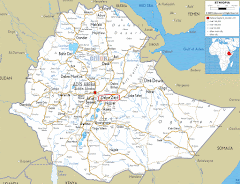Bob and I enjoyed a leisurely walk one Saturday morning in September through rice fields that were ready to be harvested. The typical growing season in our area is April or May to September or October. We arrived in Japan in time to see the rice being planted, and now it is harvest time.
We talked to one farmer who said his field yields about 500 kilograms of rice each season. It is typical for a farmer to have one small field (one and a half acres).
When I was a young child, I hated rice! In high school, when families from Vietnam moved to my home community and served rice at every meal, I developed a taste for it. When I lived in Palestine, rice was my "comfort" food. If I had a challenging day at work, Bob would turn on the rice cooker!
Bob and I don't eat rice nearly as often as the typical Japanese person--once or twice a week on average--but rice is still one of my favorite foods. Like many Asians, I prefer the short-grained sticky rice to the long grained or brown rice even though there's no comparison in nutritional value.
To better understand my students' rice-eating habits, I did an informal survey with one of my classes last week. Here's what I found out:
What does rice cost in Japan? It isn't cheap. According to this photo in our local supermarket, a 10 kilogram bag costs anywhere from 27 to 49 U.S. dollars (equivalent). The map on the bag indicates which part of Japan the rice comes from. (There is a ban on importing it from abroad.) We've asked different people for their rice preferences, and we've gotten as many different responses.
That's it for today's rice trivia! It's time to go eat some rice!
When I was a young child, I hated rice! In high school, when families from Vietnam moved to my home community and served rice at every meal, I developed a taste for it. When I lived in Palestine, rice was my "comfort" food. If I had a challenging day at work, Bob would turn on the rice cooker!
Bob and I don't eat rice nearly as often as the typical Japanese person--once or twice a week on average--but rice is still one of my favorite foods. Like many Asians, I prefer the short-grained sticky rice to the long grained or brown rice even though there's no comparison in nutritional value.
To better understand my students' rice-eating habits, I did an informal survey with one of my classes last week. Here's what I found out:
- 22 out of 24 students eat rice every day.
- 6 students eat rice 3 meals a day, while 15 eat it twice a day.
- 10 students eat less rice now than in high school, while 5 students eat more now.
- Not all students know how much rice their family buys every month. Most think it's 10 kilograms, a few think it's 20, and a few think it's 5. I told them to ask their parents for homework!
- 6 of the 24 know someone who has a rice field.
What does rice cost in Japan? It isn't cheap. According to this photo in our local supermarket, a 10 kilogram bag costs anywhere from 27 to 49 U.S. dollars (equivalent). The map on the bag indicates which part of Japan the rice comes from. (There is a ban on importing it from abroad.) We've asked different people for their rice preferences, and we've gotten as many different responses.
That's it for today's rice trivia! It's time to go eat some rice!













Nice post, Cynthia. Great pictures.
ReplyDeleteGreat blog, Cynthia!
ReplyDelete